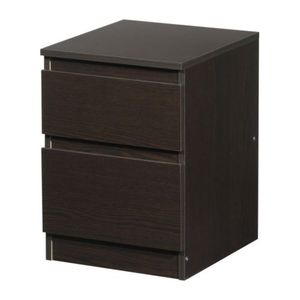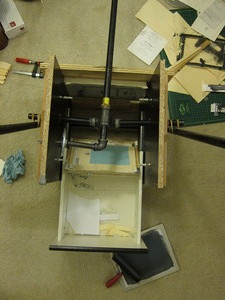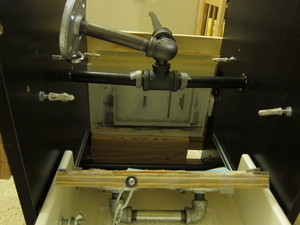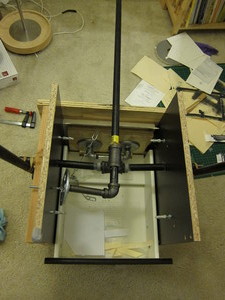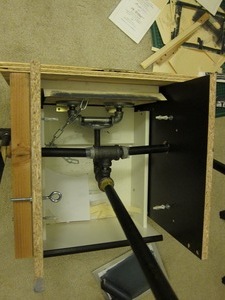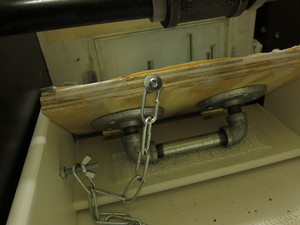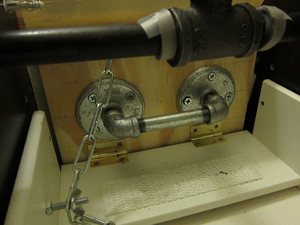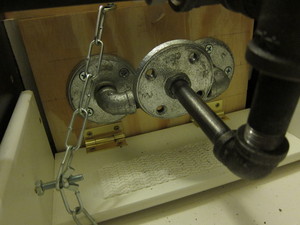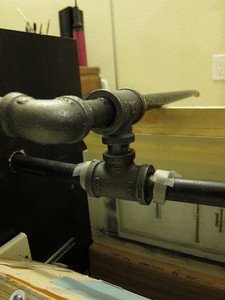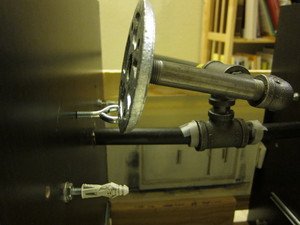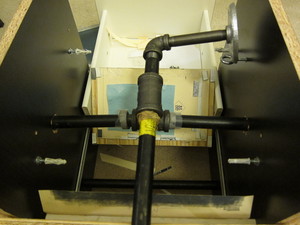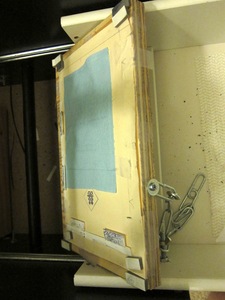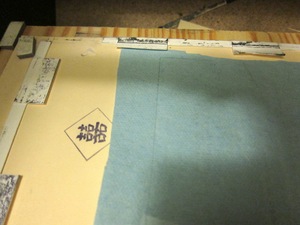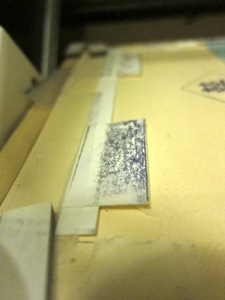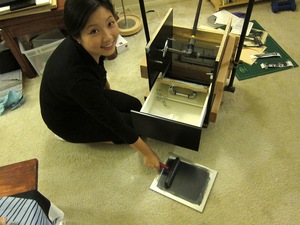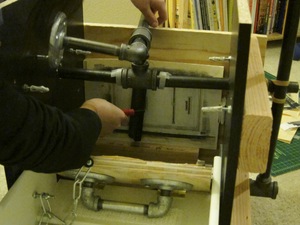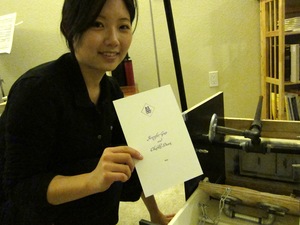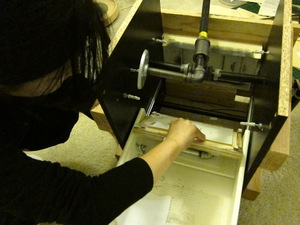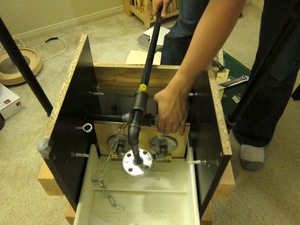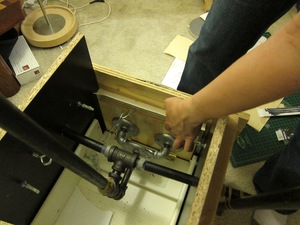A Printing Press from an Ikea Chest
We built a printing press for printing the cover pages of the programs. It is based on this press.
Here is a picture of the whole printing press:
The printing press is made of an Ikea Kullen chest of drawers, several pieces of wood, and several iron pipes. Here is a picture of the original cabinet:
The cabinet is upside down, but with a drawer placed facing upwards. Here is a top view showing the inside of the cabinet and the drawer:
The drawer slides back and forth, and there is a piece of plywood attached to the back side of the drawer with a hinge, so it can swing up and down. The paper being printed is placed on this piece of plywood.
On the back of a cabinet is another piece of plywood which is attached to the sides of the cabinet. This back piece holds the engraved printing plate, which is inked to create the impression.
Ink is rolled using a rubber brayer. The ink itself is on a glass plate, which is essentially an 8x10 photo frame.
The pieces of manila folder taped around the printing plate are roller bearers, which keep the roller from inking the back of the plate (too much). For other impressions, a mask cut out of paper suffices.
To print, the drawer is slid inward to meet the back plate.
Then, to apply pressure, a lever is pressed against the back of the drawer.
In order to keep the whole device from tipping over, counterpressure needs to be applied to the cabinet. That is what the metal frame in the first picture is for. Here is a close-up of the metal frame.
Here are close-ups of the printing plate and of the drawer closing to make an impression.
Note the retaining chain that keeps the back of the drawer from swinging out too far.
The pressing lever rotates on an axis, which is a pipe that runs through the cabinet. The axis pipe is then connected using a series of T-joints to the lever pipe. The joints are not actually screwed into the axis, but rather are just large enough so that they slip around the axis.
The lever has an L-joint connected to a flange, to press against the drawer back. In a resting position, there is a small screw that holds the flange out of the way.
Here is a picture of the back of the device, showing the lever and the back plate.
A rubber band, wrapped around the lever pipe, is used to adjust the height of the lever as it hits the drawer back.
This is the printing paper holder, underneath the lever. On top of the plywood, there is a cut manila folder, which holds the printing paper. The blue sheet is a soft paper towel, which helps to create an impression in the paper.
Here is a different view of the paper holder. The foam squares on the corners keep the printing paper from touching the inked plate prematurely, to prevent smudging.
The paper holder, being a cut manila folder, opens up for doing make-ready work. Taped inside is a printed paper, with thin sheets of paper taped inside to adjust the pressure on parts of the print.
Retaining tabs, glued to the outside of the manila folder, ensure proper registration of the paper. The tabs are made of the same paper as the printing paper. The paper is placed under the tabs and abut against the long strips of paper.
Here is a close-up of one of the tabs. The ink on the tab was an accident, as was the print on the manila folder.
Using the Press
Making an impression involves (1) inking the printing plate, (2) inserting paper, and (3) pressing the paper against the plate.
First, we roll the ink onto the roller, and then ink the plate.
There is not much space for inking the plate, which is why the lever has to be moved out of the way.
Next, we insert the paper to be printed. The image has two colors, and the first color is already printed.
The paper goes into the holder, under the tabs.
Then we push the paper up to the printing plate.
Finally, the lever is pressed to make the impression. Feet can press harder than hands, but you end up in a funny position.
Here is the result!
Thoughts
It took us a week and six different colors to make the final products. Thus, they are all unique!
Charles’s carpet is now multi-colored.
Apparently Charles does not know his own strength, because he broke one of the lever pipes. Jenny couldn’t press the machine for her life. She think that is mean, but it is true, and you can tell which ones she did. Her feet ones were about as good as Charles’s hand ones.

